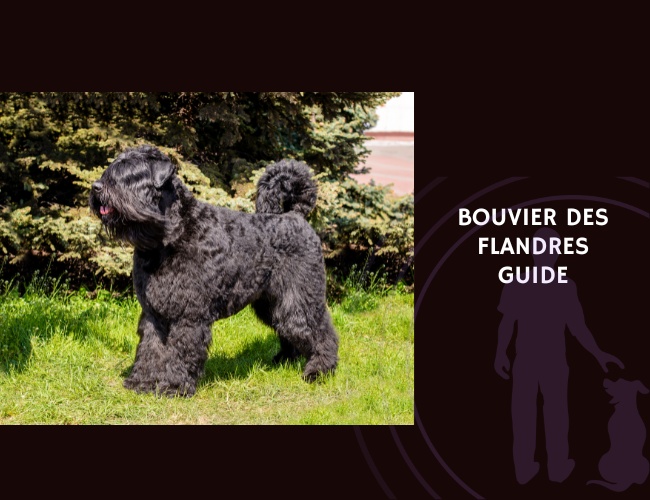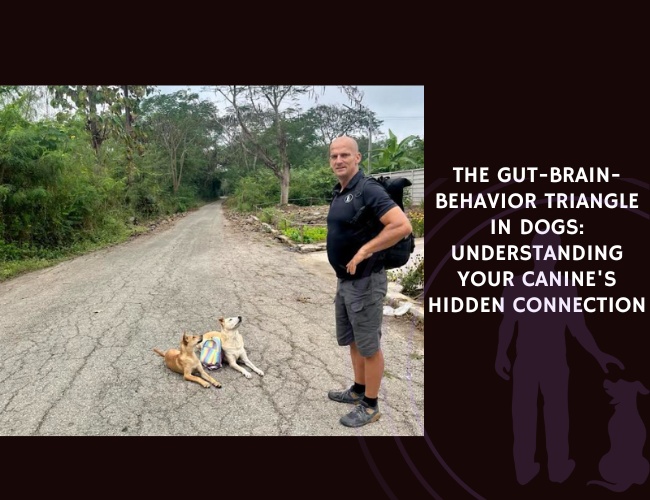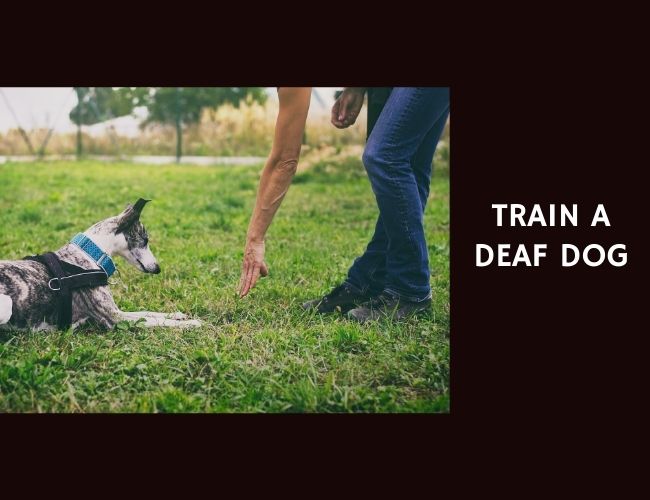Picture a dog with the heart of a teddy bear, the courage of a lion, and a beard that could rival any philosopher’s – that’s your Bouvier des Flandres. This remarkable Belgian breed carries centuries of working heritage in their powerful frame, yet they’ll gently watch over your children with the tenderness of a nursemaid. Let us guide you through understanding these magnificent “dirty-bearded” companions who’ve captured hearts from Flemish farms to modern family homes.
Character & Behaviour: Understanding Your Bouvier’s Noble Soul
The Working Heritage That Shapes Their Heart
Did you know your Bouvier’s ancestors were the Swiss Army knives of the dog world? Back in 1600s Flanders, these versatile giants weren’t just herding cattle – they were pulling milk carts at dawn, churning butter by noon, and guarding the farm by night. The monks at Ter Duinen monastery carefully bred Irish Wolfhounds and Scottish Deerhounds with local farm dogs, creating what would become your modern Bouvier’s exceptional temperament.
Their wartime courage tells a powerful story. During World War I, Bouviers served as battlefield messengers and stretcher-bearers, displaying such remarkable bravery that legend says Hitler himself declared war on the breed after being bitten by one. German soldiers were known to shoot Bouviers on sight, nearly driving these noble dogs to extinction. This heritage of courage and resilience flows through every Bouvier today – creating dogs with exceptional endurance, natural problem-solving abilities, and that characteristic calm under pressure that makes them such reliable family guardians.
Your Bouvier’s work ethic isn’t just history – it’s hardwired. You might notice your furry friend attempting to “herd” family members, especially children, or positioning themselves strategically to monitor everyone in the household. This isn’t stubbornness; it’s centuries of breeding telling them to keep their flock safe. Understanding this instinct helps you channel it appropriately through training and purposeful activities.
Decoding Your Bouvier’s Temperament
Your Bouvier des Flandres possesses what behaviorists call “discriminating intelligence” – they don’t just follow commands blindly but actually assess situations before responding. This gentle, rational nature makes them exceptional family companions, though it can sometimes be mistaken for stubbornness by those unfamiliar with the breed.
The loyalty runs deeper than you might expect. Bouviers form bonds that psychologists would describe as “secure attachment” – they’re devoted without being clingy, protective without being aggressive. You’ll notice your Bouvier positions themselves where they can observe all family members, a behavior rooted in their amygdala’s heightened awareness patterns. They’re reading the room constantly, processing social cues with remarkable emotional intelligence.
Reserved with strangers? That’s a feature, not a bug. Your Bouvier’s natural aloofness toward unfamiliar people stems from their guardian heritage. They’re assessing, not rejecting. This discerning nature means they won’t overwhelm your guests with unwanted attention, but they’re always ready to step in if genuine threat appears. Think of them as your family’s gentle bodyguard – professional, courteous, but always on duty 🐾
The Cognitive Abilities That Will Amaze You
Here’s something fascinating: your Bouvier has what researchers call “episodic-like memory” – they remember not just commands but contexts, emotions, and consequences. Once your Bouvier learns something, they literally never forget it. This elephant-like memory means consistency in training is crucial because they’ll remember every exception you make to the rules.
Problem-solving comes naturally to these thinking dogs. You might find your Bouvier figuring out how to open gates, manipulating objects to reach goals, or even attempting to “train” you through subtle behaviors. This isn’t defiance – it’s their prefrontal cortex engaging in complex reasoning. They’re actually capable of what scientists call “inferential reasoning” – drawing conclusions from incomplete information.
Boredom is your biggest enemy. A Bouvier without mental stimulation is like a genius child in a blank room – they’ll create their own entertainment, and you might not like their choices. This is why varied training approaches work best; repetition actually hinders their learning ability once they’ve grasped a concept.
Training & Education: Shaping Your Gentle Giant
Early Socialisation: Building Confidence in Your Puppy
Those first 14 weeks of your Bouvier puppy’s life are what neuroscientists call the “critical period” – their brain is literally more plastic and adaptable than it will ever be again. Missing this window doesn’t mean disaster, but it does mean working harder later to achieve the same results.
Your socialisation checklist needs strategic planning:
- Weeks 3-14: Expose them to at least 100 different people of various ages, appearances, and energy levels
- Weeks 14-16: Navigate the fear imprint period gently – one bad experience now can create lasting anxiety
- Months 4-6: Introduce complex environments like busy streets, pet stores, outdoor cafes
- Months 6-14: Refine their responses during adolescent boundary-testing
Quality matters more than quantity in exposures. Each new experience should end positively – a frightening encounter with an aggressive dog can undo weeks of careful work. Think of it like building a library of positive references in your puppy’s hippocampus. Every good experience becomes a template for future encounters.
Don’t forget the “boring” socialisation. Your Bouvier needs to learn that sometimes nothing happens – not every person wants to pet them, not every dog wants to play. This “neutral socialisation” prevents overexcitement and frustration in adult life. Practice having your puppy simply exist calmly in various environments.
Mastering Obedience with Your Strong-Willed Partner
Training a Bouvier isn’t like training a Golden Retriever who lives to please. Your Bouvier asks “why?” before “how?” – and that’s actually a sign of their intelligence. They’re eager to work with you once they understand the purpose, making them incredible partners when approached correctly.
The secret lies in making them think it was their idea. Instead of drilling “sit” fifty times, ask for it once, reward brilliantly, then move on. Come back to it later in a different context. This varied approach prevents the boredom that can make your Bouvier “forget” commands they know perfectly well. Remember, they thrive on praise and genuinely want to make you happy – once they understand what you’re asking.
Leadership isn’t dominance – it’s guidance. Your Bouvier needs you to be their CEO, not their dictator. Clear expectations, consistent boundaries, and fair consequences create the structure these dogs crave. Think of yourself as providing the framework within which your dog’s intelligence can flourish. When you establish this dynamic early, you’ll find your Bouvier anticipating your needs rather than challenging your authority.
Managing Those Guardian Instincts
“Protecting the family when danger threatens isn’t something that needs teaching” – this truth about Bouviers means you’re working with, not against, powerful genetic programming. Your job isn’t to eliminate these instincts but to channel them appropriately.
Teach the “friend” command early and consistently. When visitors arrive, this becomes your Bouvier’s cue that these people belong. Practice with familiar people first, gradually introducing strangers. Your dog needs to learn that you decide who’s welcome – they’re the security consultant, not the decision-maker.
Impulse control exercises are non-negotiable:
- “Wait” at every doorway until released
- “Leave it” with increasing distractions
- Calm greetings after exciting arrivals
- Resource sharing without guarding
- Controlled tug games with clear start/stop rules
The key to management? Predictability. Your Bouvier’s guardian instincts activate most strongly in ambiguous situations. Clear routines for visitors, delivery people, and public encounters help your dog understand when vigilance is needed and when they can relax.
Nutritional Recommendations: Fueling Your Working Companion
The Large Breed Diet Equation
Your Bouvier’s nutritional needs reflect their working heritage – they need fuel for both body and brain. Think of their diet as premium gasoline for a high-performance engine that also happens to have a sensitive carburetor.
Protein requirements change with life stage and activity. Adult Bouviers need 18-25% high-quality protein, but working dogs or those in competitive sports may need up to 30%. Look for named meat sources (chicken, beef, salmon) as the first ingredients. Your Bouvier’s muscles are constantly repairing and rebuilding, especially if they’re active, making protein quality crucial for maintaining their impressive physique.
Fat isn’t the enemy – it’s essential fuel. That 10-15% fat content provides concentrated energy and helps maintain your Bouvier’s distinctive harsh coat. Omega-3 and omega-6 fatty acids don’t just make their coat shine; they support cognitive function and help manage the inflammation that can accompany joint stress in large breeds.
Portion control prevents problems. Feed your adult Bouvier 3-5 cups of high-quality food daily, split into two meals. This isn’t just about preventing obesity – it’s about reducing the risk of gastric dilatation-volvulus (bloat), a life-threatening emergency that can strike deep-chested breeds like yours.

Supporting Those Hardworking Joints
Here’s something your vet might not emphasize enough: your Bouvier’s joints need nutritional support starting in puppyhood, not just in senior years. This breed’s susceptibility to hip and elbow dysplasia means prevention starts at the food bowl.
Early supplementation makes a difference. Starting joint supplements before problems appear can significantly slow arthritis development. Think of glucosamine and chondroitin as insurance policies for your dog’s mobility. Add omega-3 fatty acids to reduce inflammation, MSM for flexibility, and green-lipped mussel for its natural anti-inflammatory properties.
Weight management is joint management. Every extra pound on your Bouvier multiplies the stress on their joints by four. That “just a little chubby” dog is actually carrying the equivalent of a heavy backpack all day, every day. Use body condition scoring – you should feel ribs easily but not see them, and your dog should have a visible waist from above.
The Digestive Balance
Let’s address the elephant in the room – or rather, the gas in the room. “Bouvier gas” is legendary among owners, but it’s manageable with the right approach. Your dog’s digestive system reflects their farm dog heritage; they can handle variety but thrive on consistency.
Probiotics aren’t just trendy – they’re essential. Products like DogZymes can transform your Bouvier’s digestive health, reducing that famous flatulence while improving nutrient absorption. Think of probiotics as gardeners for your dog’s gut microbiome, cultivating the beneficial bacteria that keep everything running smoothly.
Bloat prevention requires lifestyle management:
- Feed from floor level (elevated feeders are controversial)
- No exercise for an hour before and after meals
- Limit water consumption during feeding
- Multiple smaller meals instead of one large one
- Learn the emergency signs: unsuccessful vomiting attempts, distended abdomen, restlessness
Health Management: Keeping Your Bouvier Thriving
Understanding Orthopedic Vulnerabilities
Your Bouvier’s impressive size comes with orthopedic challenges that require proactive management. Hip and elbow dysplasia aren’t just “big dog problems” – they’re complex genetic conditions that can significantly impact quality of life if not addressed early.
Hip dysplasia develops silently. You might not notice symptoms until arthritis has already set in. Watch for subtle signs: bunny-hopping when running, difficulty rising after rest, or reluctance to jump. Early detection through radiographs at two years old can guide management strategies before permanent damage occurs.
Management is multimodal and lifelong:
- Weight control (the single most important factor)
- Appropriate exercise (swimming is ideal)
- Joint supplements started early
- Physical therapy for muscle support
- Anti-inflammatory medications when needed
- Surgical options for severe cases
Cruciate ligament injuries are often preventable. Maintaining proper muscle tone through regular, moderate exercise protects these crucial knee stabilizers. Avoid weekend warrior syndrome – sudden intense activity after a sedentary week increases injury risk dramatically.
Navigating Eye Health Challenges
Your Bouvier’s soulful eyes require vigilant care. Several hereditary conditions can affect their vision, making regular ophthalmologic examinations essential for early detection and treatment.
Cataracts aren’t just an aging issue. Hereditary cataracts can appear in young Bouviers, causing the lens to become cloudy and impairing vision. While surgical removal is possible and often successful, early detection improves outcomes. Annual CERF (Canine Eye Registration Foundation) testing helps identify problems before they impact quality of life.
Glaucoma is a medical emergency. This inherited condition, causing increased pressure within the eye, typically appears before age three in affected Bouviers. If you notice red eyes, excessive blinking, or eye swelling, don’t wait – immediate veterinary attention can mean the difference between treatment and blindness. The pain from glaucoma is severe, though your stoic Bouvier might not show obvious distress.
The Endocrine System Balance
Hypothyroidism affects Bouviers at a higher rate than many breeds, typically manifesting during middle age. Your dog’s thyroid gland is essentially their metabolic thermostat – when it underperforms, everything slows down.
Symptoms creep in gradually:
- Weight gain despite normal eating
- Lethargy that seems like “just getting older”
- Coat becomes dull, thin, or patchy
- Skin problems including infections
- Cold intolerance unusual for the breed
The good news? Treatment is straightforward. Daily thyroid hormone supplementation essentially replaces what the body isn’t producing. With proper medication, hypothyroid Bouviers return to their normal, energetic selves. Regular blood tests ensure dosing remains appropriate as your dog ages 🧡
Cancer Vigilance and Prevention
Lymphoma strikes Bouviers more frequently than many breeds, but knowledge is power when it comes to early detection and treatment. This cancer of the lymphocytes (white blood cells) often responds remarkably well to chemotherapy when caught early.
Know the warning signs:
- Swollen lymph nodes (check behind the jaw, in front of the shoulders)
- Unexplained weight loss
- Decreased appetite
- Labored breathing
- Unusual lethargy
Prevention strategies that make a difference:
- Spaying/neutering at appropriate ages reduces reproductive cancers
- Maintain healthy weight (obesity increases cancer risk)
- Quality nutrition with antioxidants
- Minimize exposure to lawn chemicals and pesticides
- Regular veterinary screenings catch problems early
Remember the high pain threshold. Your Bouvier’s stoic nature means they might not show discomfort until conditions are advanced. Regular hands-on examinations during grooming sessions help you notice lumps, bumps, or swellings early.
Gentle. Brave. Discerning.
Heritage forged in work. From Flemish farms to wartime battlefields, Bouviers embody resilience, courage, and a deep-rooted instinct to guard and guide their families.
Loyalty with intelligence. They bond through secure attachment, reading environments with quiet emotional awareness. Protective yet calm, their devotion is steady and balanced.
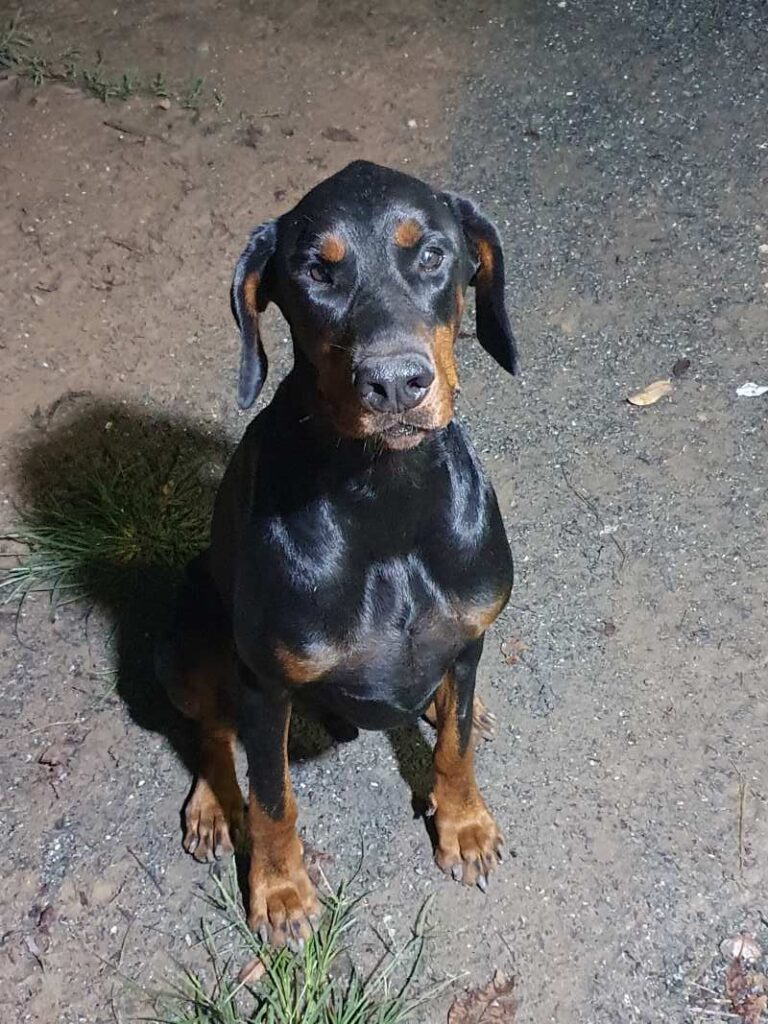
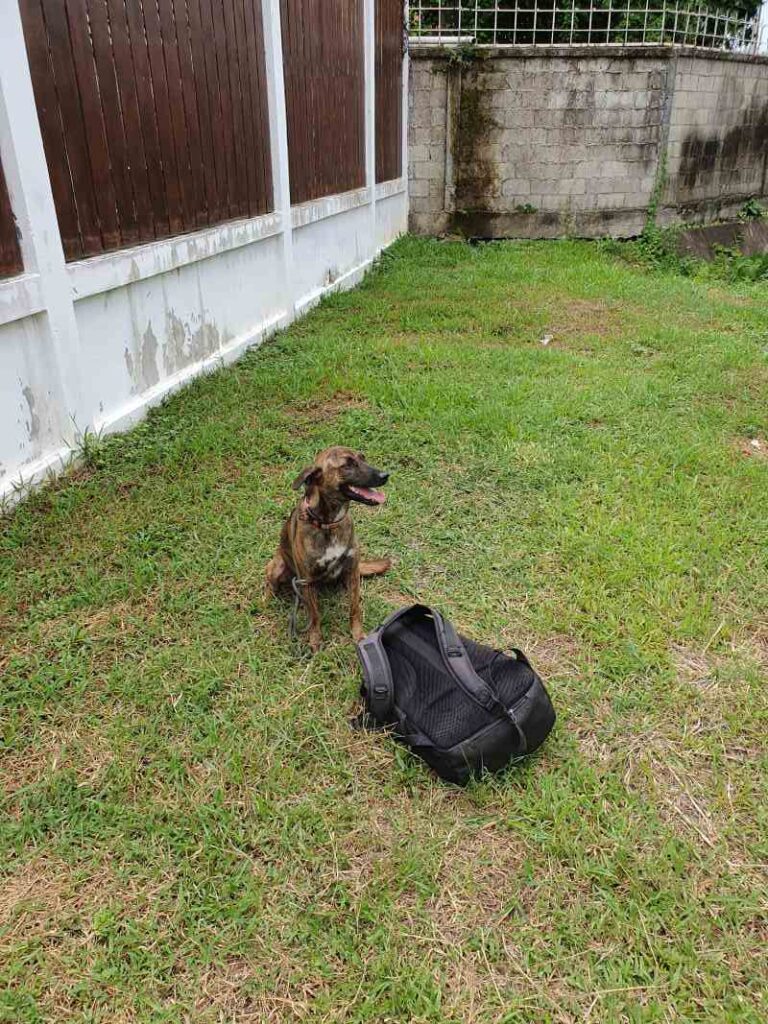
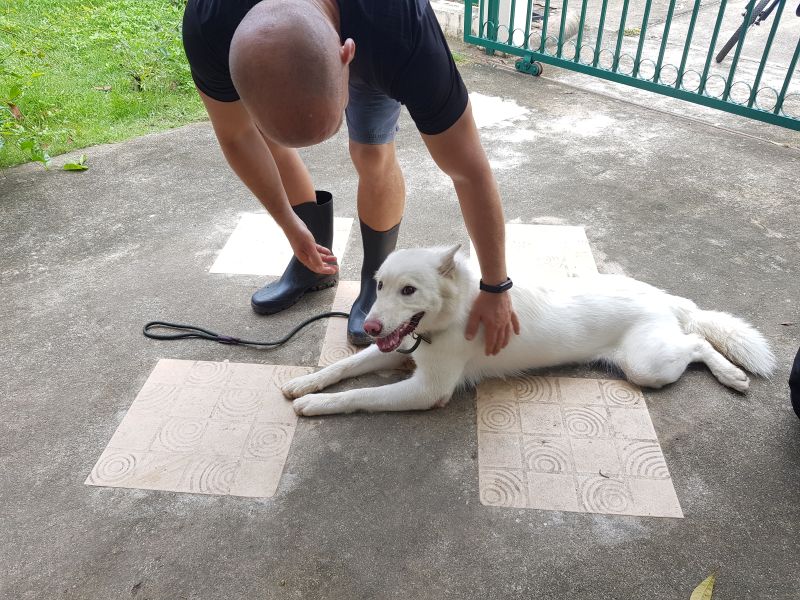
A guardian with grace. Aloof with strangers but tender at home, Bouviers watch over loved ones like noble sentinels, blending strength with a gentle, thoughtful heart.
Lifestyle Integration: Living with Your Bouvier
Exercise: Meeting Physical and Mental Needs
Your Bouvier needs 60-90 minutes of purposeful exercise daily – but this isn’t just about tired muscles. You’re managing a complex interplay between physical energy, mental stimulation, and emotional well-being. Without adequate exercise, your intelligent Bouvier becomes a canine powder keg of pent-up energy.
Physical activities that honor their heritage work best:
- Long hiking adventures: Your Bouvier’s endurance shines on challenging trails
- Swimming sessions: Perfect low-impact exercise that’s easy on joints
- Cart pulling: Connects them to their working roots while building strength
- Herding activities: Even without livestock, herding balls or classes satisfy instincts
- Bikejoring: Running alongside your bicycle (once properly conditioned)
Mental exercise prevents destruction. A tired Bouvier without mental stimulation is still a problem Bouvier. Puzzle toys, scent work, and training sessions engage their problem-solving abilities. Hide treats around your house for “find it” games, use food puzzles for meals, or teach complex trick sequences. Your Bouvier’s brain needs a workout just as much as their body.
Age-appropriate exercise protects growing bodies. Puppies should exercise for just five minutes per month of age, twice daily. That three-month-old puppy? Fifteen-minute sessions are plenty. Overexercising young Bouviers can damage developing joints, leading to problems later. Let them set the pace during play, and avoid repetitive jumping or long runs until they’re physically mature at 18 months.
Adapting to Your Living Environment
Can a Bouvier thrive in your specific living situation? The answer depends less on square footage and more on your commitment to meeting their needs.
Rural life is their paradise. With acres to patrol and potentially livestock to guard, rural Bouviers often display the calmest, most satisfied temperaments. They have natural outlets for their energy and instincts. However, secure fencing is non-negotiable – your Bouvier’s territorial instincts mean they’ll expand their “patrol zone” as far as you allow.
Suburban success requires structure. Your Bouvier can absolutely thrive in suburbia with a large, secure yard and dedicated exercise routine. They adapt remarkably well when given clear boundaries and regular activities. The key? Don’t let them become “weekend warriors” – consistent daily exercise prevents behavioral issues and keeps neighbors happy. That deep bark carries, so training quiet times is essential for suburban harmony.
Urban living challenges even dedicated owners. While possible, city life with a Bouvier demands extraordinary commitment. You’ll need access to large parks, the discipline for twice-daily extended walks regardless of weather, and exceptional training to navigate crowded sidewalks. Apartment living generally isn’t suitable – not just because of size, but because Bouviers need immediate outdoor access and their footfalls aren’t exactly light. If you’re determined to make urban life work, consider whether you can provide the 2+ hours daily of activities they need.
Weather Considerations for Your Belgian Beauty
Your Bouvier’s Flemish heritage means they’re built for harsh North Sea winters – but that same coat becomes a liability in heat.
Cold weather is their element. That double coat isn’t just warm; it’s waterproof and windproof. Your Bouvier can work comfortably in conditions that would send other breeds running for the fireplace. Snow becomes a playground, and rain is barely noticed. Still, they need shelter from extreme conditions, and ice-melting chemicals require paw protection or thorough washing after walks.
Heat demands careful management. Bouviers can barely tolerate hot weather – that magnificent coat becomes a portable sauna. During summer months, exercise must shift to early morning and late evening. Air conditioning isn’t a luxury; it’s essential for their comfort and health. Some owners consider summer clips, though this remains controversial among breed purists. Never shave completely – the coat provides some insulation against heat too.
Watch for heat stress signs: excessive panting, drooling, weakness, or confusion require immediate cooling. Keep water constantly available, provide cooling mats, and never leave your Bouvier in a car, even briefly. Their thick coat means they heat up faster and cool down slower than other breeds 🐾
Family Integration: Your Bouvier as Family Member
Children and Your Gentle Giant
Your Bouvier’s relationship with children often seems almost magical – these powerful dogs display remarkable gentleness with little ones. But this isn’t automatic; it’s a combination of instinct and proper introduction.
Natural nanny instincts emerge with proper socialization. Bouviers often adopt children as their special charges, following them protectively and alerting adults to perceived dangers. You might notice your Bouvier gently herding wandering toddlers back toward parents or positioning themselves between children and strangers. This protective instinct is beautiful but needs appropriate boundaries.
Size matters in unexpected ways. Your Bouvier doesn’t always realize their size – that happy tail wag is at perfect toddler-face height, and an enthusiastic greeting can bowl over small children. Teach your Bouvier to sit for child greetings and to be extra gentle around little ones. Simultaneously, children need education about respecting the dog’s space, especially during meals or rest.
Supervision remains essential. Even the gentlest Bouvier has limits, and children don’t always recognize warning signs. Teach children to recognize when your dog needs space: turning away, moving to another room, or subtle stress signals like lip licking or yawning. Your Bouvier’s high pain threshold means they might tolerate discomfort longer than other breeds, but this doesn’t mean they should have to.

Multi-Pet Household Dynamics
Introducing a Bouvier to existing pets – or adding pets to a Bouvier household – requires understanding their complex social instincts.
Same-sex aggression can surprise unprepared owners. While not universal, some Bouviers display intolerance toward same-sex dogs, especially intact individuals. This stems from their guardian instincts rather than general aggression. Early socialization with various dogs helps, but some Bouviers simply prefer being the only dog of their gender in the household.
Cat relationships depend on introduction timing. Bouviers raised with cats often become their fierce protectors, but adult Bouviers meeting cats for the first time might display prey drive. Successful integration requires patience: controlled introductions, positive associations, and clear boundaries. Some Bouviers learn to differentiate between “their” cats and strangers, protecting household cats while chasing neighborhood intruders.
Small pet considerations are serious. That herding instinct can trigger chase responses toward rabbits, guinea pigs, or birds. While some Bouviers learn to coexist peacefully with small pets, others never become trustworthy around them. Always supervise interactions and provide secure housing for small animals that prevents accidental harm.
Creating Family Bonds
Your Bouvier doesn’t just live with your family – they become an integral part of its emotional fabric. These dogs read family dynamics with remarkable accuracy, often serving as emotional barometers for household stress.
They choose their people carefully. While friendly with all family members, most Bouviers form a primary bond with one person. This isn’t favoritism – it’s their working heritage of having a primary handler. However, they remain devoted to the entire family unit, simply showing subtle preferences in who they shadow most closely.
Include them in family activities. Bouviers thrive on inclusion rather than observation. Whether it’s backyard barbecues, camping trips, or just watching TV, your Bouvier wants to participate. This isn’t neediness – it’s their collaborative working heritage expressing itself. The more included they feel, the more balanced their behavior becomes.
The Ideal Bouvier Owner: Is This Your Breed?
Essential Owner Characteristics
Not everyone is suited for Bouvier ownership – and that’s okay. These magnificent dogs require specific qualities in their human partners to truly thrive.
Leadership without domination is crucial. Your Bouvier needs you to be their confident guide, making decisions with quiet authority rather than force. Think CEO, not drill sergeant. If you’re uncomfortable setting boundaries or inconsistent with rules, your intelligent Bouvier will make their own decisions – and you might not like their choices.
Physical capability matters. Can you handle 70-110 pounds of muscle if your dog sees a squirrel during a walk? What about grooming that powerful body or lifting them into a car if they’re injured? Be honest about your physical limitations – loving the breed isn’t enough if you can’t safely manage their size and strength.
Time commitment goes beyond exercise. Yes, you need 90+ minutes daily for physical activity, but what about grooming sessions, training time, and simple companionship? Bouviers don’t thrive as backyard dogs or weekend companions. They need integrated involvement in your daily life. If your job requires frequent travel or long hours away, reconsider whether now is the right time for a Bouvier.
Lifestyle Compatibility Assessment
Before committing to a Bouvier, honestly evaluate whether your lifestyle aligns with their needs.
Green flags – you might be perfect for a Bouvier if you:
- Have experience with large or working breeds
- Enjoy outdoor activities regardless of weather
- Work from home or have flexible schedules
- Have a secure yard and neighborhood walking areas
- Appreciate dogs who think before acting
- Want a companion for specific activities (hiking, camping, sports)
- Have the patience for a dog that matures slowly (full mental maturity at 2-3 years)
Red flags – reconsider if you:
- Live in a small apartment without yard access
- Travel frequently for work or pleasure
- Prefer spontaneous, flexible schedules
- Want a dog that’s immediately friendly with everyone
- Have limited physical strength or mobility issues
- Expect low-maintenance pet ownership
- Live in extremely hot climates without adequate cooling
Additional Considerations: The Daily Reality
The Grooming Commitment
Let’s address what Bouvier owners call “the beard situation” – it’s real, it’s messy, and it’s part of the package. That magnificent beard acts like a sponge, carrying water, food, and outdoor debris throughout your home.
Daily grooming isn’t optional. That harsh outer coat and soft undercoat create a perfect storm for matting. Miss a few grooming sessions, and you’ll face painful mats that might require shaving. Budget 20-30 minutes daily for brushing, plus those professional grooming sessions every 6-8 weeks.
The coat attracts everything. Bouviers have been called “Velcro dogs” not for their personality but for their coat’s ability to collect twigs, leaves, burrs, and any other debris they encounter. After every outdoor adventure, expect to spend time removing nature from their fur. Their beard requires cleaning after every meal unless you enjoy food-decorated walls at beard height.
Seasonal shedding surprises people. While Bouviers are often called “non-shedding,” this is misleading. They do shed, but the dead hair gets trapped in their coat rather than falling out. Without regular brushing, this creates mats and skin problems. During seasonal coat changes, grooming needs intensify significantly.
Preserving Working Heritage
Many Bouvier enthusiasts emphasize maintaining the breed’s working abilities, not just their appearance. This matters even for companion dogs.
Working activities satisfy deep instincts. Whether it’s formal herding trials, cart pulling demonstrations, or protection sports like Schutzhund, giving your Bouvier a “job” transforms their behavior. These activities provide mental satisfaction that no amount of walking can achieve. Even simple tasks like carrying a backpack on hikes or “helping” with yard work fulfill their need for purpose.
Modern jobs for ancient instincts include:
- Therapy dog work (their calm nature suits this perfectly)
- Search and rescue (excellent scenting ability and endurance)
- Service dog roles (intelligent and trainable)
- Competitive dog sports (agility, obedience, rally)
- Property guardian (their historical role)
Purpose prevents problems. Bouviers without jobs often create their own – and you might not appreciate their entrepreneurial choices. That might mean obsessive patrolling, excessive alerting to sounds, or destructive investigation of interesting smells. Channel their working drive appropriately, and you’ll have a satisfied, well-balanced companion.
The High Pain Threshold Factor
This characteristic deserves special emphasis because it significantly impacts your Bouvier’s care. Their stoic nature means injuries or illness might go unnoticed until they’re serious.
Daily hands-on checks become essential. During grooming, systematically feel for lumps, cuts, swellings, or tender areas. Check between toes for foreign objects, examine ears for infection signs, and monitor their gait for subtle lameness. Your Bouvier might be suffering silently, so proactive detection is crucial.
Behavioral changes matter more than obvious symptoms. A Bouvier who becomes slightly less enthusiastic about walks, hesitates before jumping, or shows subtle appetite changes might be experiencing significant discomfort. Trust subtle signs and investigate thoroughly rather than waiting for obvious pain displays.
Conclusion: Your Journey with a Bouvier des Flandres
The Bouvier des Flandres isn’t just a dog – they’re a lifestyle choice, a working partner, and a family guardian wrapped in a shaggy, bearded package. These remarkable dogs bring centuries of Belgian farming wisdom into modern homes, offering unwavering loyalty, thoughtful protection, and gentle companionship to those who understand their needs.
Success with a Bouvier means embracing their complexity. You’re not getting a simple pet but a thinking, working partner who thrives on purpose and inclusion. Their intelligence demands mental engagement, their heritage requires physical activity, and their sensitive nature needs consistent, confident leadership. When these needs are met, Bouviers transform from challenging puppies into magnificent adults who seem to read your mind and guard your heart.
The rewards match the requirements. For the right owner, a Bouvier offers experiences no other breed can match. Imagine a dog who walks your children to the bus stop with the dedication of a bodyguard but the gentleness of a nanny. Picture a companion who joins you on mountain hikes with endless endurance, then curls up quietly during evening reading time. Envision a partner who assesses every situation with intelligent discrimination, protecting when needed but remaining calm and controlled in daily life.
Your decision impacts the next decade. With a life expectancy of 10-12 years, choosing a Bouvier means committing to their considerable needs throughout their lifetime. From the energetic puppy years through the dignified senior stage, your Bouvier will require dedicated care, substantial resources, and unwavering commitment. But they’ll repay that investment with devotion that touches your soul and protection that lets you sleep soundly.
If you’re ready for muddy pawprints, beard water on your walls, and hair that requires professional attention, if you can provide strong leadership with gentle hands, if you have the time, space, and resources for a true working dog – then welcome to the wonderful world of Bouvier ownership. Your gentle giant is waiting to become your shadow, your guardian, and your most loyal friend. The journey won’t always be easy, but for those who understand and embrace the Bouvier des Flandres, it’s a journey that enriches life in ways you never imagined possible 🧡

